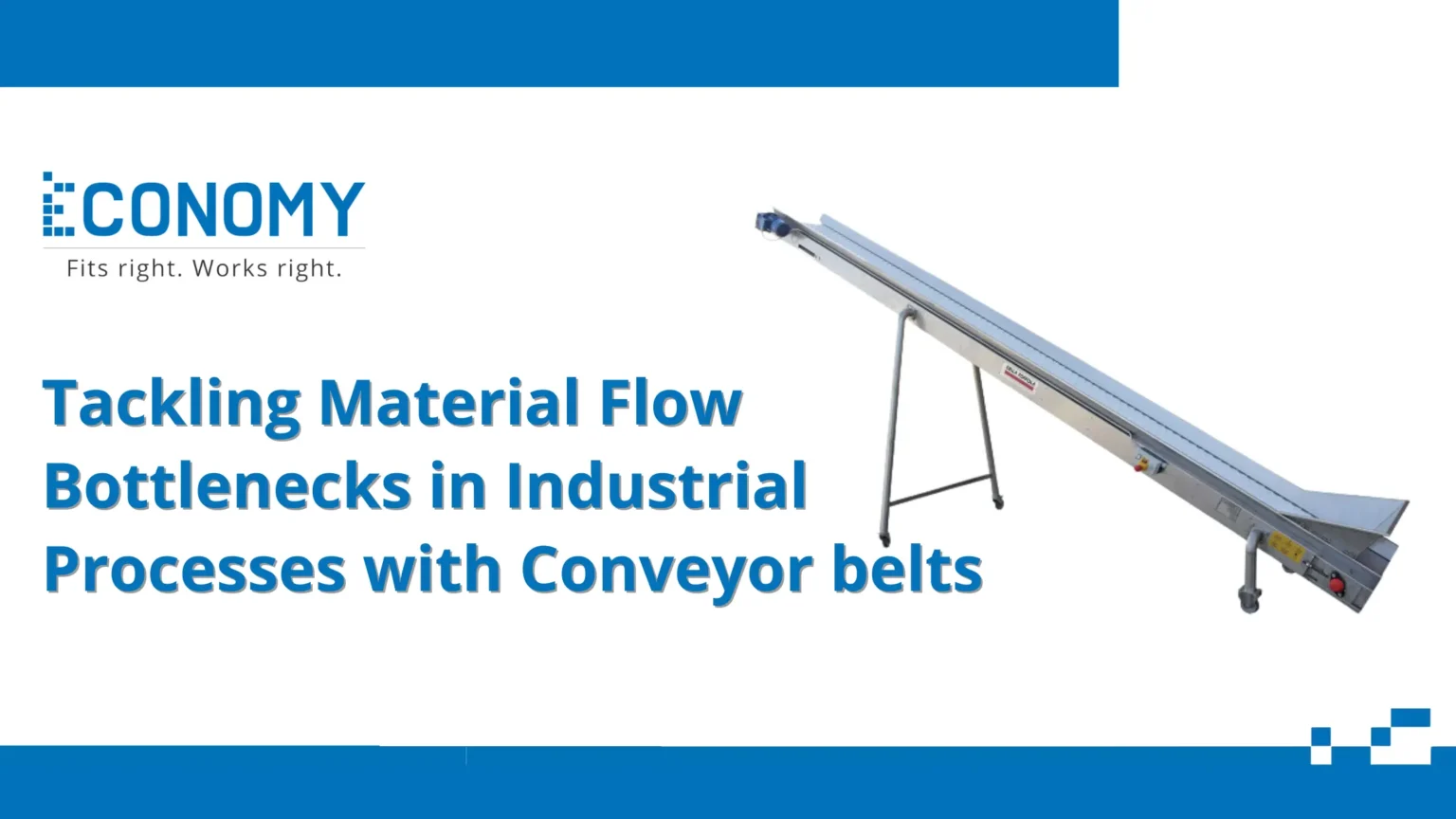Efficient material flow is crucial for maintaining productivity and minimizing downtime in industrial processes. Conveyor belts have long been an integral part of material handling systems, offering a versatile and reliable solution to streamline operations. However, bottlenecks in material flow can arise due to design inefficiencies, misaligned systems, or the unique challenges posed by specific materials. This article explores how conveyor belts can be customized and optimized to address material flow bottlenecks in varied industrial applications.
Customization for Varied Industrial Material Handling Applications
One of the primary advantages of conveyor belts is their adaptability to diverse industrial needs. Different industries—ranging from mining and agriculture to manufacturing and logistics—require unique solutions tailored to their material handling challenges. Customization ensures that conveyor belts meet specific operational demands, including:
- Capacity Requirements: Industries handling heavy loads or high-volume materials need conveyor belts with robust designs and increased load-bearing capabilities. Conversely, lightweight materials demand belts that prioritize speed and efficiency.
- Environmental Conditions: Conveyor belts must withstand harsh conditions, such as extreme temperatures, corrosive chemicals, or abrasive materials. For example, industries like mining may require belts made of reinforced rubber or steel, while food processing industries need hygienic, FDA-compliant materials.
- Specialized Features: Depending on the application, belts can be customized with features such as cleats, sidewalls, or magnetic strips to manage specific material types or ensure smooth transportation on inclined or declined paths.
- Space Optimization: Industries operating in limited spaces benefit from modular and flexible conveyor systems that can navigate complex layouts, including curves, vertical lifts, and compact loops.
Conveyor Belt Material and Design Considerations
Choosing the right Conveyor Belt Material and Design Considerations is essential to avoid bottlenecks and maintain operational efficiency. Key considerations include:
- Material Composition: The base material of a conveyor belt—such as rubber, PVC, polyurethane, or metal—should align with the material it will transport and the operating environment. For example, heat-resistant belts are critical for industries dealing with high-temperature materials.
- Durability and Longevity: Belts must withstand wear and tear, especially in industries handling abrasive or sharp-edged materials. Reinforced belts with multi-layered construction or specialized coatings can significantly extend service life.
- Belt Width and Length: Proper sizing ensures that the conveyor system accommodates the required volume of material without overloading or underutilizing capacity.
- Surface Texture: Smooth surfaces are ideal for fragile or finished goods, while textured or cleated belts are better suited for bulk materials that need extra grip.
- Energy Efficiency: Lightweight, low-friction materials can reduce energy consumption, a critical factor in industries aiming for sustainable operations.
Speed and Synchronization Control Features
Efficient material flow depends not only on the physical design of conveyor belts but also on precise control mechanisms. Speed and synchronization play a pivotal role in preventing bottlenecks, particularly in high-speed or multi-process environments.
- Variable Speed Drives (VSDs): VSDs allow operators to adjust conveyor speed to match production demands. This flexibility is especially beneficial for industries with fluctuating output levels or seasonal variations.
- Synchronization with Upstream and Downstream Processes: Conveyor belts must integrate seamlessly with other equipment, such as crushers, sorters, or packaging machines. Advanced synchronization systems ensure smooth transitions and prevent material backups.
- Automated Control Systems: Integrating conveyor belts with automated sensors and programmable logic controllers (PLCs) enables real-time monitoring and dynamic adjustments to prevent disruptions.
- Load Balancing: Intelligent systems can distribute material evenly across multiple conveyors, avoiding overloading and ensuring consistent flow.
Addressing Specific Material Flow Bottlenecks
Material flow bottlenecks can significantly impact productivity and increase operational costs. Conveyor belts can address these challenges through targeted solutions:
- Overloading: Overloading can cause belt slippage or damage, leading to downtime. Installing load sensors and designing belts with higher load capacities can mitigate this issue.
- Material Spillage: Poorly contained materials can cause spillage, leading to product loss and safety hazards. Adding sidewalls, skirts, and sealed edges to conveyor belts can effectively address spillage.
- Uneven Distribution: Materials accumulating in specific areas of the belt can slow down operations. Using diverters or distributing feeders ensures even material distribution.
- Clogging in Transfer Points: Transfer points between conveyors are common areas for material bottlenecks. Optimizing chute angles, incorporating vibrating feeders, and maintaining smooth transitions reduce clogging.
- Dealing with Fragile or Delicate Materials: Handling fragile materials requires belts with smooth surfaces and slower speeds to avoid breakage.
- Space Constraints: In facilities with limited space, compact and modular conveyor systems with tight turning radii can improve material flow without requiring significant infrastructure changes.
Conclusion
Conveyor belts are indispensable in industrial material handling, offering solutions to streamline operations and tackle bottlenecks. By customizing conveyor systems for specific applications, selecting appropriate materials and designs, and incorporating advanced control features, industries can achieve efficient, reliable, and cost-effective material flow. Addressing bottlenecks not only improves productivity but also enhances safety and reduces operational costs, ensuring long-term success in diverse industrial sectors. As technology continues to evolve, conveyor belts will remain a cornerstone of innovative material handling solutions.




